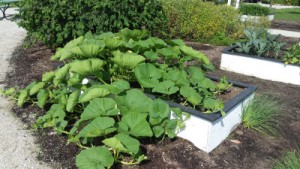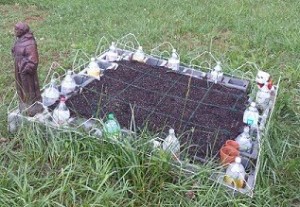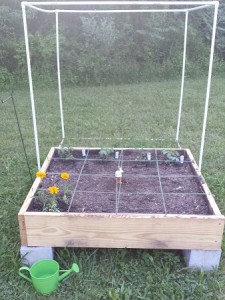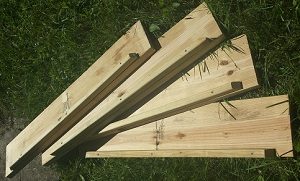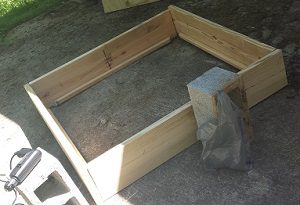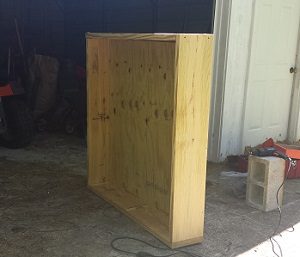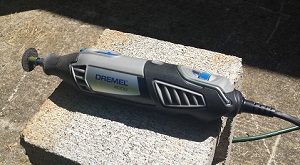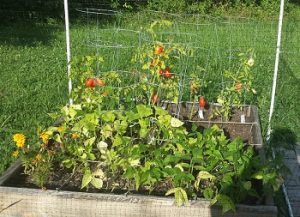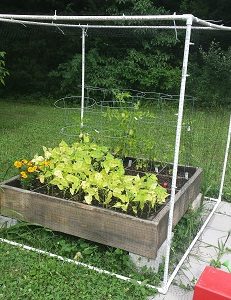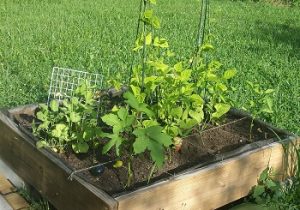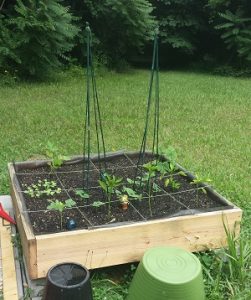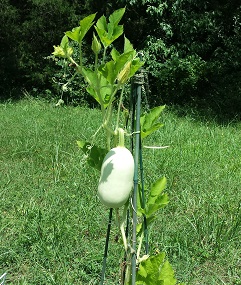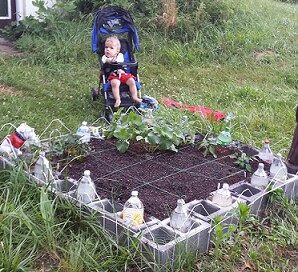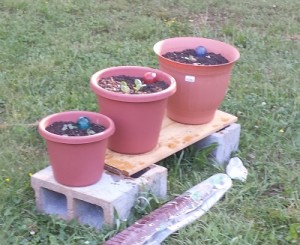…and future.
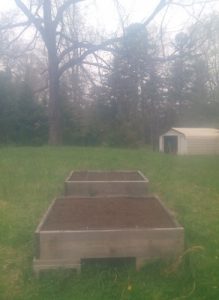
In the early spring of 2016, I started preparing my two square foot boxes for what I hoped would be another successful year. I had a lot of pressing issues on my mind, but I hoped the garden would become a source of joy. I certainly needed some of those.
The first box was going to have the standard four by four configuration, and would consist largely of crops that I knew did well in my area. I also planned to transplant some marigolds to cut back on pests. I had read that these flowers can repel certain pests, so last year I tried a few. They worked very well, and my daughter liked tending to them.
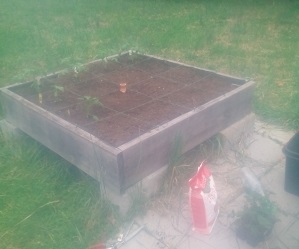
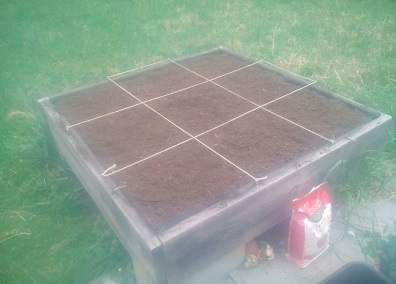
I set up second box as a “niner,” with eighteen-inch squares instead of twelve. My plan was to use these larger squares to try plants that usually need more space in which to grow. Most types of squash fall into this category. I added some short walls, made from parts of old storage cubes, to serve as foundations for lattice racks and supports for bean poles. I also hoped that these walls would encourage squash plans to send their gigantic leaves over the side of the box instead of all over the other squares.
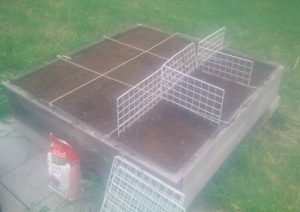
I planted the first seeds shortly after the spring equinox, and the transplants came a few days later. I started with cucumbers, radishes, and other plants that do well when the weather is still cold. The first transplants were some young tomato plants, also of a variety that could resist cold. The nights in this part of Virginia can be quite chilly, even as late as mid-May. Roughly half of the squares were filled. My plan was to fill the remaining squares with the more heat loving plants on or around Memorial Day.
That isn’t what happened.
The constant attempts to save my career sapped away all of my energy and will. Instead of the garden becoming a source of joy, or even a place I could go to escape stress, it became a source of stress itself. The garden needed to be tended to, especially in March through May, and certain things had to be done by certain dates. I found that those dates and timetables were causing me considerable anxiety, and making my already frantic mind feel even worse. Given that the garden was (at this point) ultimately a hobby, it was more important for me to be free of this optional responsibility.
Reluctantly, I said, “not this year.” I put my gardening tools back into their storage crate, and abandoned the boxes to go wild.
Such was the rueful fate of my 2016 garden.
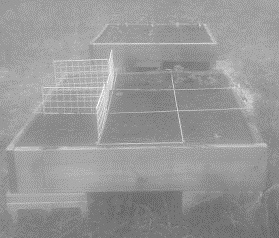
Truth be told, sleep was one of the few luxuries I had for most of that year. The anxiety brought on by my work situation was so great, and so pervasive, that there was no other activity I could engage in that could allow me to put it out of my mind. Even for a hour or two. Nothing helped. It really was that bad.
That brings us to 2017.
The career problems I had last year are finally coming to an end, though not in the best of ways. After fourteen years, the complications brought on by ADHD are forcing me to leave my job. And yet, given that the stress levels and resulting anxiety brought on by my work place was making me very ill (and I’m not just referring to ADHD), perhaps this is for the best.
My wife and I are now looking at new career options, or at least other jobs. It’s possible that searching for a new job will prove just as stressful, and could prove to be just as difficult. So I’m looking forward with caution. However, one of the jobs I am exploring is that of certified square foot gardening instructor. So this year I expect to be gardening again, because the garden will double as job training!
We had some unseasonably warm days in mid-February, and I took the opportunity to start working on the area for the new garden. Not to mention fix up a real eyesore of a side lawn. There was a lot of brush that needed to be cleared away before I could even mow the grass. I also discovered that the shrubs in front of the house need to be hacked down. For that I may need to use the chainsaw. I’ll attack that another time.
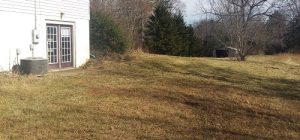
Anyway, this is the southern face of the house, and is actually the same area where my first garden (2014) box had been. Had things turned out differently, there would be a small playground there.
Another reason I had moved the garden in 2015 was because we were planning to set up a backyard playground for our son, and this is really the only suitable place we have for one. Playgrounds need an area that is largely flat, close to the house, and at least ten feet from any trees. This area has all of those things.
But a problem arose. The septic tank is in this parcel, and its position is different from what the survey report says. It’s further from the house by almost six feet, and has different dimensions. Instead of being a rough square, which the report says, it’s rectangular, with the long axis being perpendicular to the south face of the house (pictured). We are wondering if the survey report we have is an older one, and that the septic tank had been replaced or modified by a previous owner. Regardless, had we set up the playground as originally planned, the support augers would have punctured it! That would have been bad.
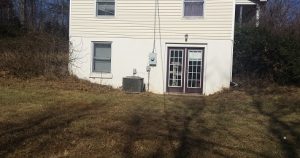
We looked at other parts of the parcel, hoping to find a creative angle for the playground that would avoid the tank. Sadly, in avoiding the tank, we either got too close to the trees, too close to the service pipes for the house, or we moved into the drainage field (which is to the right in the photo above), all of which created other problems. The only other parcels on our property that would have been suitable, at least from a ground structure standpoint, were far away from the house. Given Michael’s penchant for wanderlust, those were not options.
Sadly, the playground idea had to be scrapped.
On the other hand, this meant we could re-visit into some other ideas we had for this parcel, including moving the garden boxes back here. This area receives more consistent sunlight than almost anywhere else on the property. The first photograph was taken at around 3:00pm in the middle of February, and look at how much sun it has! During the warmer months, this area receives a steady supply of sunlight, that is only interrupted by the occasional band of shadow from nearby trees. The second photo was taken later that same day, when the sun was close to setting, and there is still a respectable amount of sun getting through. My 2014 garden had problems, but sufficient sun was not one of them.
This area is also close to the house, which makes it easier to check on and maintain. The presence of a patio light near the doors would facilitate working on the garden after sunset, should that ever be necessary. As for the previous weed problems, I would continue to keep the boxes slightly raised. In 2015, I had virtually no weed problems in either box. Even the 2016 boxes, which had gone feral, only acquired interlopers that used airborne seeds (like dandelions and certain types of straw grass). The invaders that tormented my 2014 box were mostly ground traversing types of grass, like crabgrass. They were relentless.
And there was another idea on the table. For some time, Lisa has wanted to try making an English-style cottage garden, consisting entirely of native grasses and wildflowers. Such gardens do a great job of attracting the native birds and butterflies, and are often easy to sustain once established. She has done some fascinating research on this, and has a lot of interesting ideas. At the same time, I was thinking of expanding the square foot garden to the more or less traditional configuration of four boxes, especially now that I’m looking into becoming an instructor.
These ideas have dovetailed together. I’m currently planning to build four new boxes, rather like the existing ones, only with short (18 to 24 inch) legs. These will house the vegetables and other edible plants that I want to grow. The two existing boxes, which rest between four and eight inches above the ground, will be where Lisa can experiment with native plants. She wants boxes that are close to the ground, hoping to more closely match the natural terrain, and to get an idea of how high the local plants grow. But she likes the idea of the box being slightly raised to keep unwanted weeds out. The arrangement I used for the 2015 garden, of placing the boxes on cinder block feet, should fit that bill nicely. If her collection of native grasses and wildflowers can thrive in the semi-controlled environment of a garden box, then she can later try growing them directly in the ground. Who knows, perhaps her re-introduced locals will drive away the annoying crabgrass.
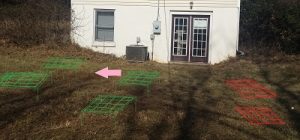
This is a rough schematic of what I’m planning. What actually happens remains to be seen. The four green boxes are the vegetable gardens, while the two red ones are the native plant gardens. Ideally, taller plants will go into the boxes that are closer to the house. That way, whatever shadow they create won’t fall on other plants and mess with their growth.
The access port for the septic tank is below the arrow, so I’ll have to tweak the locations of the adjacent boxes. I want to make sure to have a three-foot radius around the portal clear for whenever the tank needs to be serviced.
At this writing, it looks like Mother Nature remembered it’s still February, so I won’t be working on this area that much for a few weeks. Instead, I’m going to go visit Cherry Street Lumber, get the needed raw materials, and start building boxes.
It’s time to square off.
Square foot gardens past
[Part 1][Part 2][Part 3]
